A VERY RARE CLOISONNÉ ENAMEL BEAKER VASE, GUEarly 15th century Of slender form with a compressed central section rising from a spreading foot to a flaring trumpet neck, decorated to the central section and foot with large flower-heads issuing from leafy scrolls against a dark-blue ground, separated by four flanges, the neck with tall arching lappets containing further flower-heads against a dark-blue ground, beneath the rim with grapes and tendrils on a turquoise-blue ground. 25cm (10in) high.Footnotes十五世紀早期 銅胎掐絲琺瑯花卉紋出戟觚 The present lot is extremely rare with another example in the Palace Museum in Beijing. Compare with a nearly identical cloisonné enamel beaker vase, early Ming dynasty, in the Qing Court Collection, illustrated in the Compendium of Collections in the Palace Museum: Enamels, 1, p.86, no.20. Of archaistic form inspired by ancient bronze vessels from the Shang and Zhou dynasties, the present lot encapsulates the Imperial Court's concerns for the moral and political aspects of the antique. Gu vases were mentioned even in the Analects (Lunyu: Book 6, verse 25) purportedly the sayings of the sage Confucius written down by his disciples. We know that originally these were wine vessels to be drunk from by humans rather than spirits, specifically in religious sites. Although by the Ming dynasty rituals had changed, the gu vase still continued to hold important value, and successive reigns continued to imitate the shape in different media including jade and cloisonné enamel. By reviving the form of these archaic vessels, the Court strengthened its legitimacy as custodians of Confucian tradition and ritual, signalling their own virtue and mandate to rule. See a similar cloisonné enamel vase, gu, early Ming dynasty, illustrated in Colourful, Elegant, and Exquisite: A Special Exhibition of Imperial Enamel Ware from Mr. Robert Chang's Collection, Suzhou, 2007, no.10. Another related cloisonné enamel vase, gu, 15th century, is illustrated by G.G.Avitabile, Chinesische und Japanische Cloisonné und Champleve-Arbeiten von 1400 bis 1900, Berlin, 1981, p.45.
A VERY RARE CLOISONNÉ ENAMEL BEAKER VASE, GUEarly 15th century Of slender form with a compressed central section rising from a spreading foot to a flaring trumpet neck, decorated to the central section and foot with large flower-heads issuing from leafy scrolls against a dark-blue ground, separated by four flanges, the neck with tall arching lappets containing further flower-heads against a dark-blue ground, beneath the rim with grapes and tendrils on a turquoise-blue ground. 25cm (10in) high.Footnotes十五世紀早期 銅胎掐絲琺瑯花卉紋出戟觚 The present lot is extremely rare with another example in the Palace Museum in Beijing. Compare with a nearly identical cloisonné enamel beaker vase, early Ming dynasty, in the Qing Court Collection, illustrated in the Compendium of Collections in the Palace Museum: Enamels, 1, p.86, no.20. Of archaistic form inspired by ancient bronze vessels from the Shang and Zhou dynasties, the present lot encapsulates the Imperial Court's concerns for the moral and political aspects of the antique. Gu vases were mentioned even in the Analects (Lunyu: Book 6, verse 25) purportedly the sayings of the sage Confucius written down by his disciples. We know that originally these were wine vessels to be drunk from by humans rather than spirits, specifically in religious sites. Although by the Ming dynasty rituals had changed, the gu vase still continued to hold important value, and successive reigns continued to imitate the shape in different media including jade and cloisonné enamel. By reviving the form of these archaic vessels, the Court strengthened its legitimacy as custodians of Confucian tradition and ritual, signalling their own virtue and mandate to rule. See a similar cloisonné enamel vase, gu, early Ming dynasty, illustrated in Colourful, Elegant, and Exquisite: A Special Exhibition of Imperial Enamel Ware from Mr. Robert Chang's Collection, Suzhou, 2007, no.10. Another related cloisonné enamel vase, gu, 15th century, is illustrated by G.G.Avitabile, Chinesische und Japanische Cloisonné und Champleve-Arbeiten von 1400 bis 1900, Berlin, 1981, p.45.
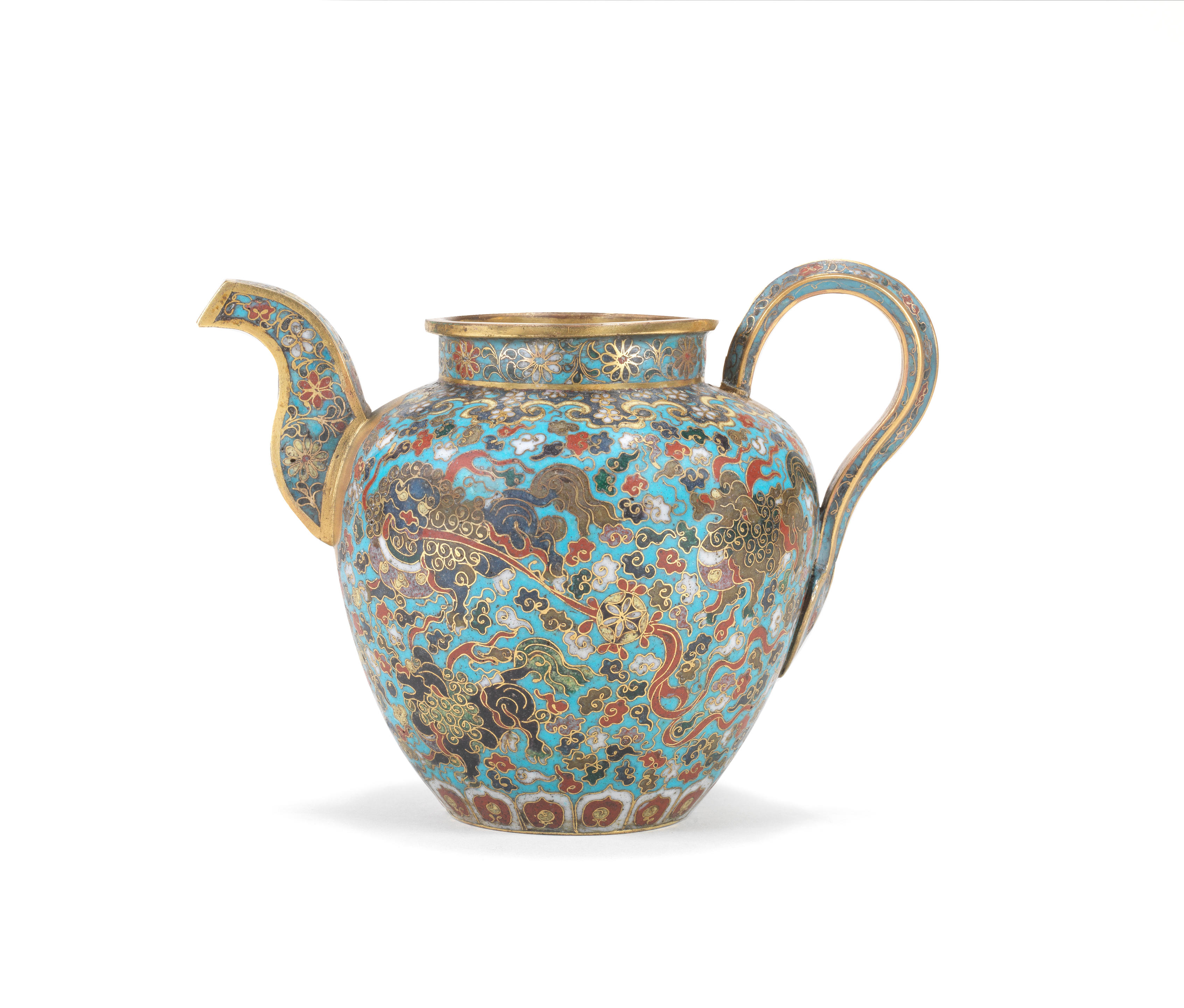
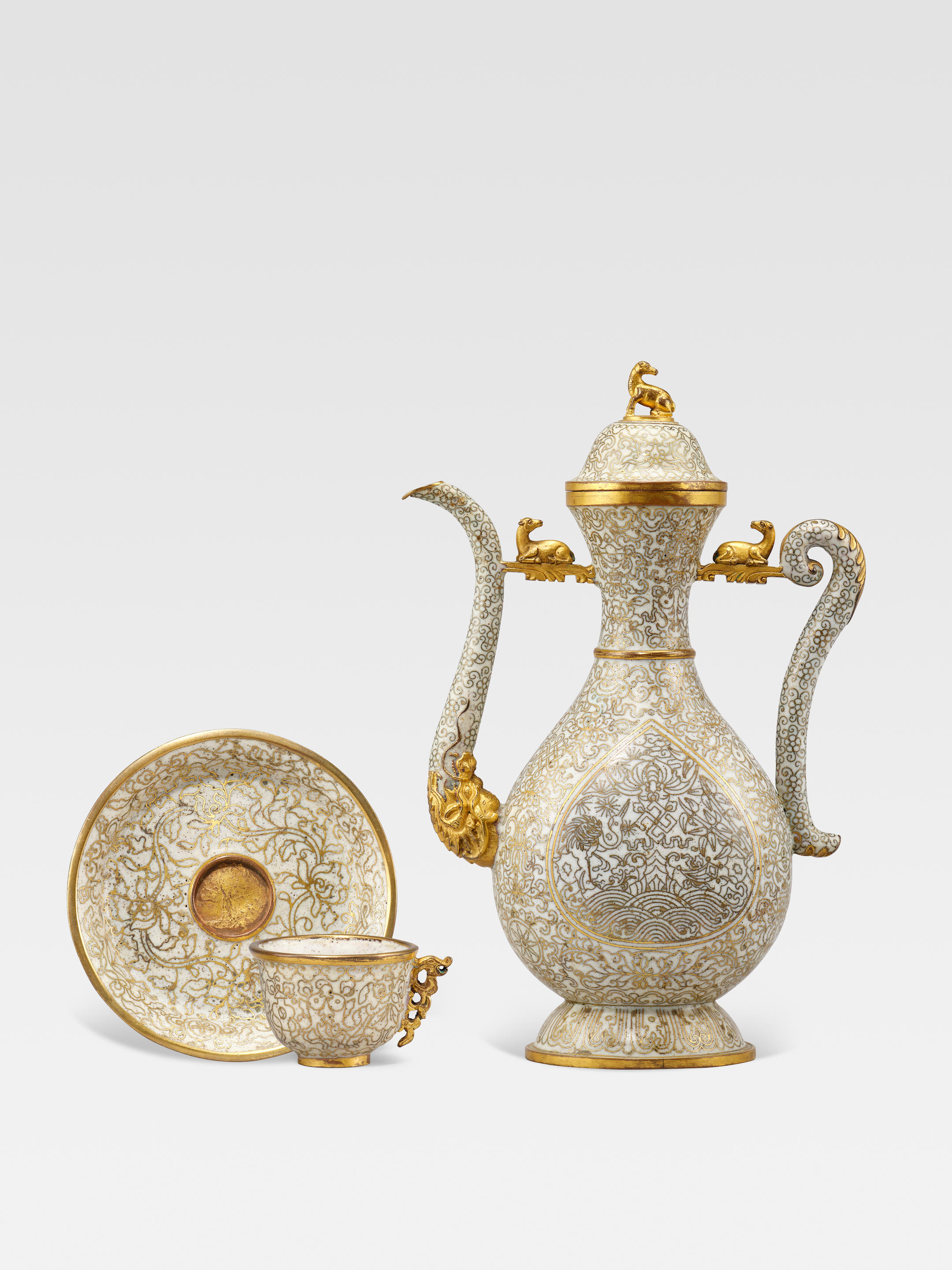
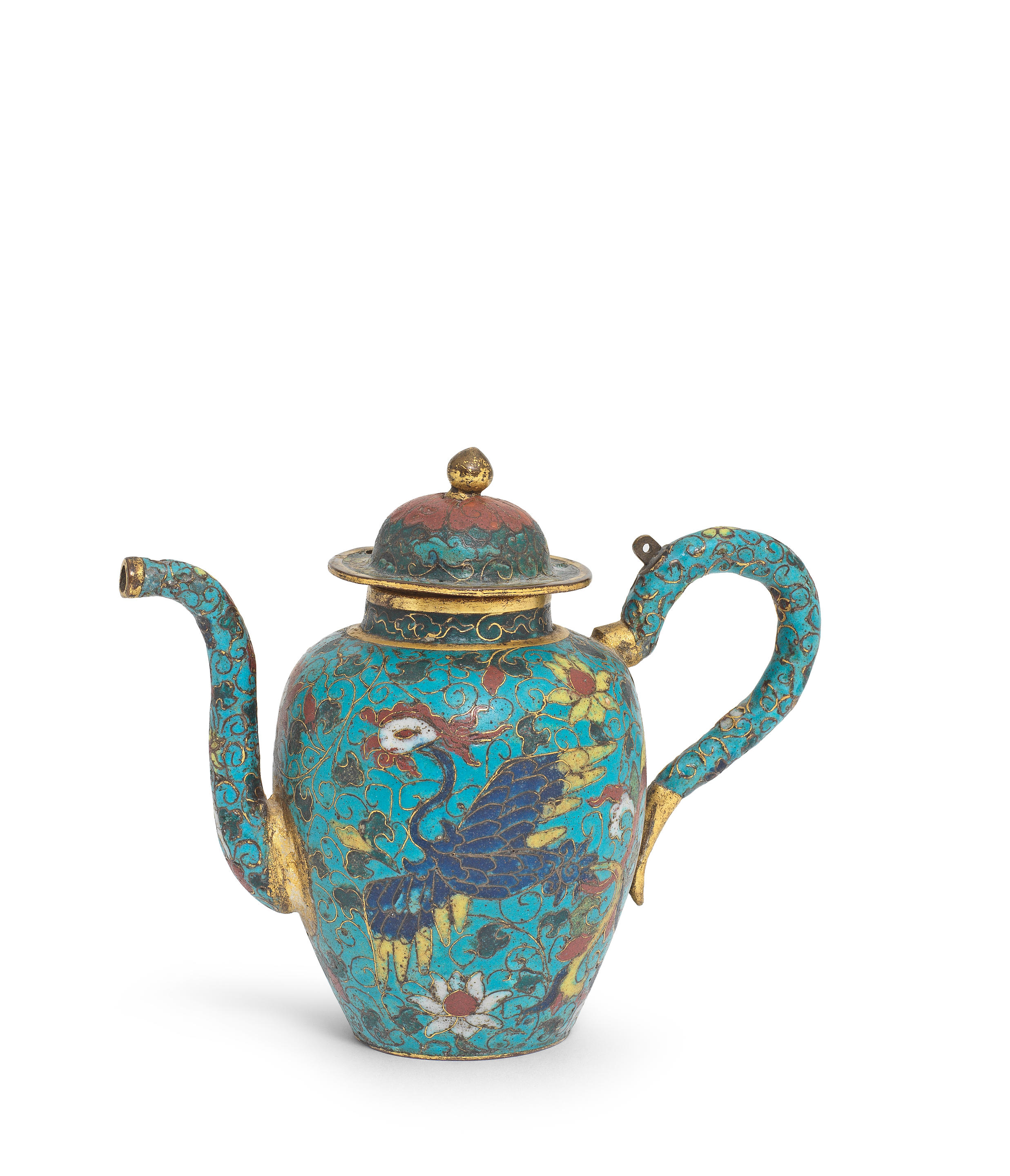
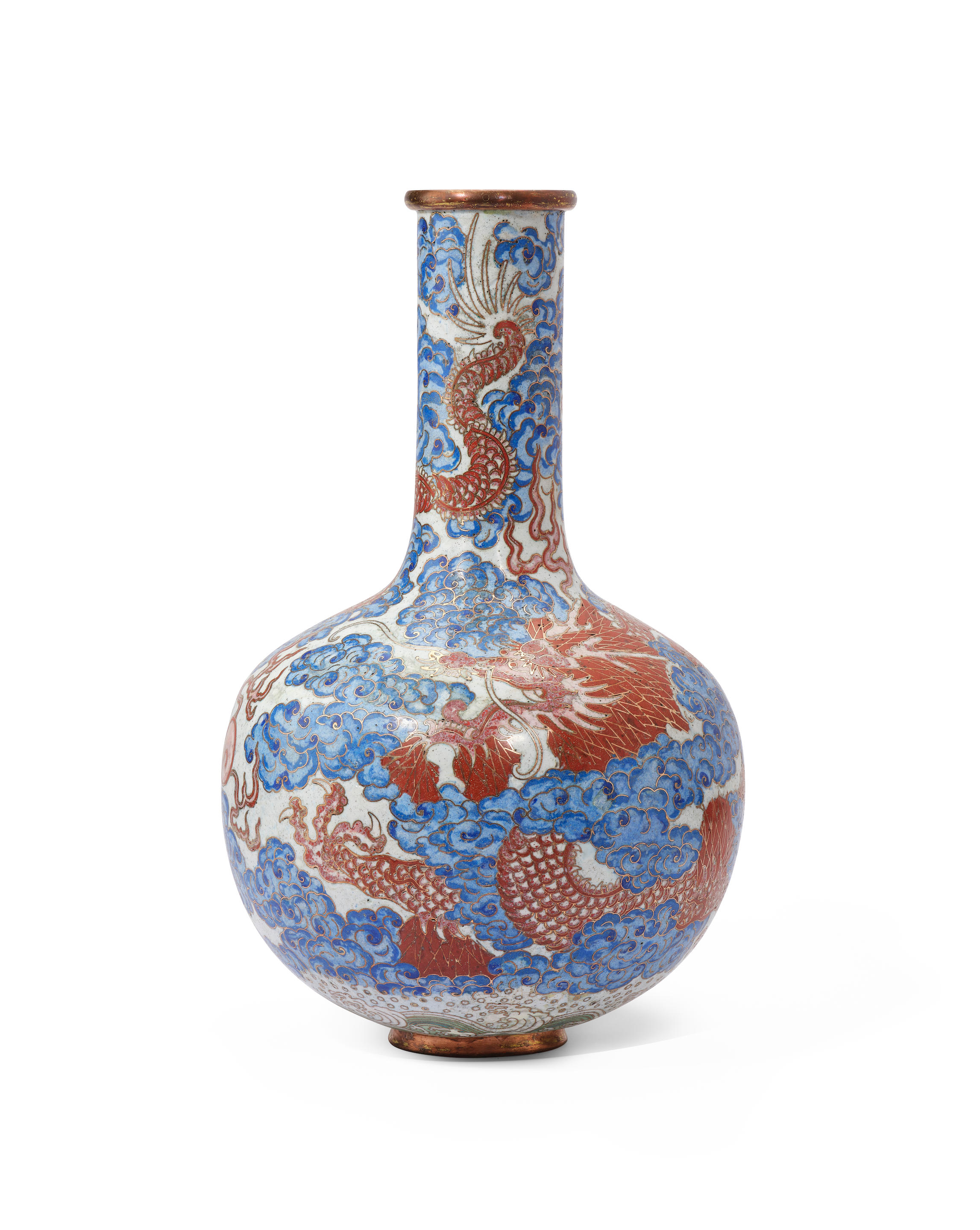
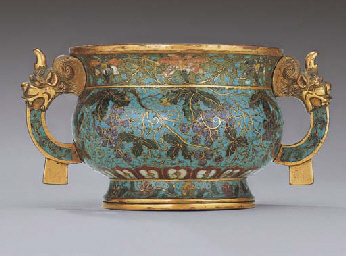
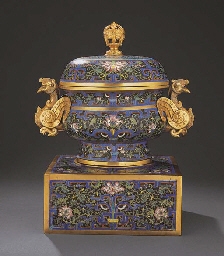






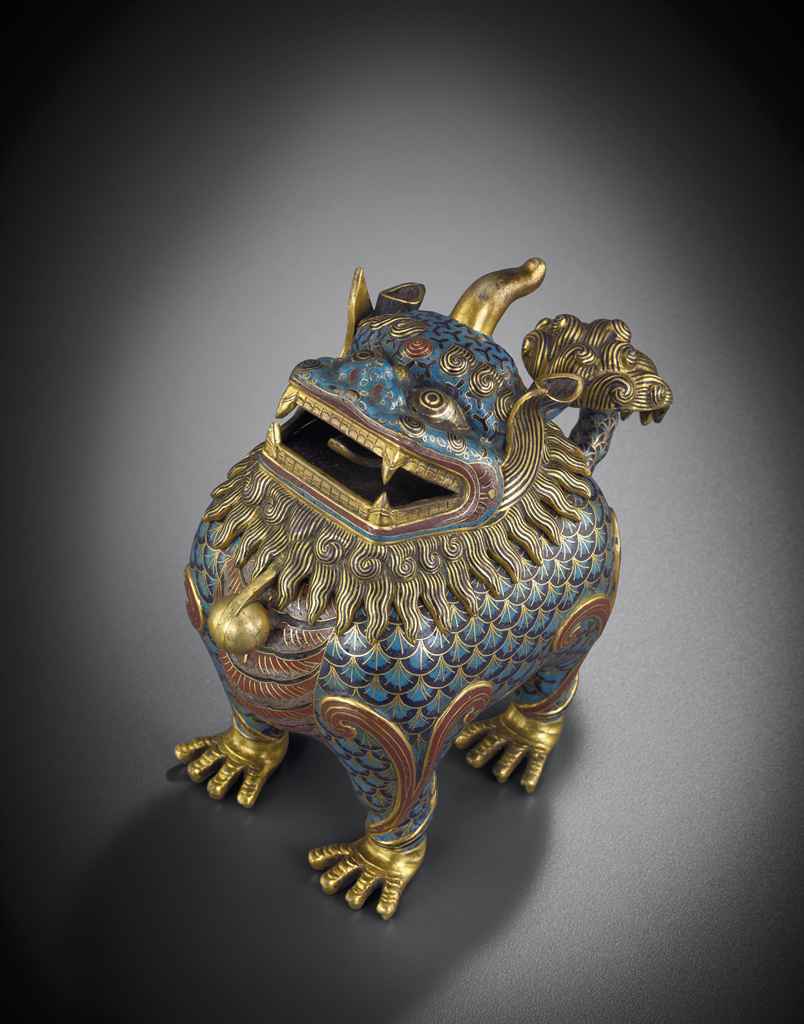
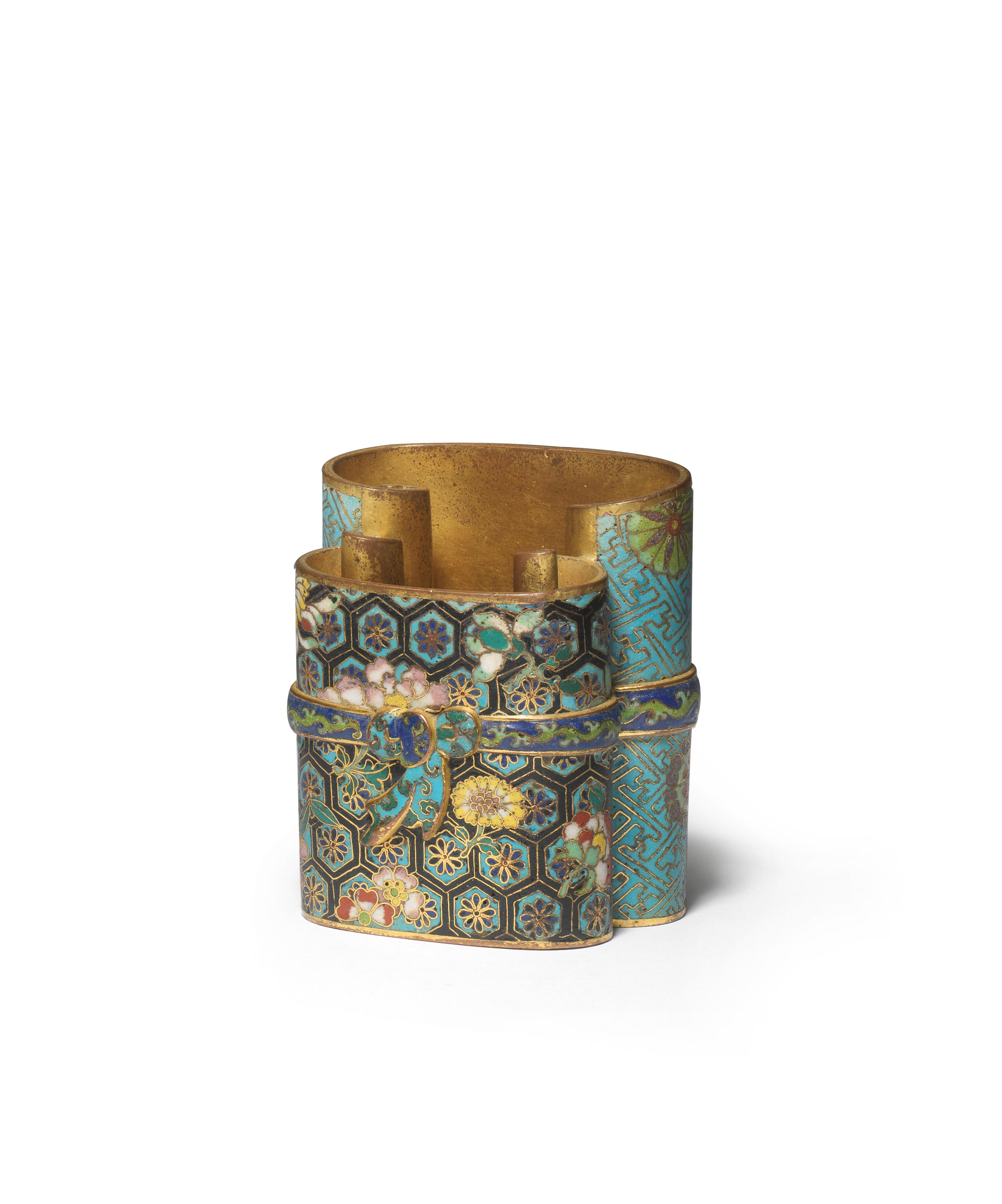
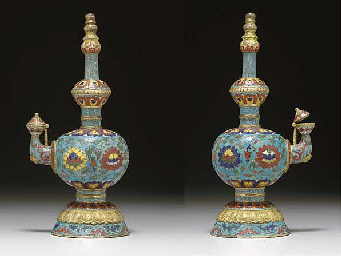
Testen Sie LotSearch und seine Premium-Features 7 Tage - ohne Kosten!
Lassen Sie sich automatisch über neue Objekte in kommenden Auktionen benachrichtigen.
Suchauftrag anlegen